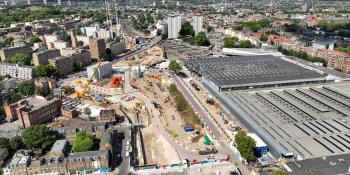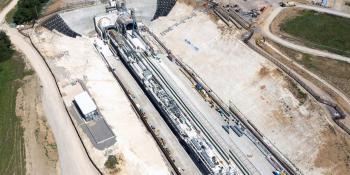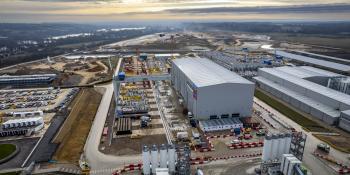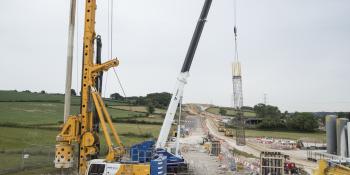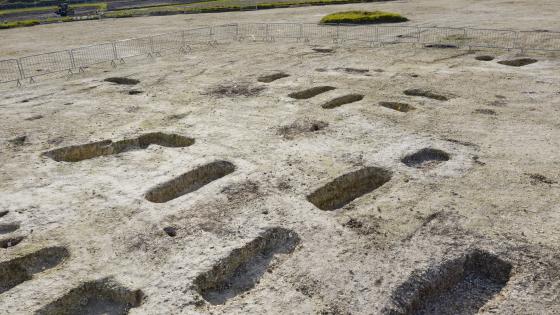
Archaeologists working on High Speed 2 Phase 1 from London to Birmingham have discovered an Anglo-Saxon burial site at Wendover of nationally significant importance.
Staff from INFRA JV working on behalf of HS2 enabling works contractor Fusion JV excavated 138 graves, with almost three-quarters containing high quality grave goods, which suggests the site was the final resting place of a wealthy Anglo-Saxon community.
The finds date to the 5th and 6th centuries – a period with significant gaps in the historical and archaeological records. Discoveries made at Wendover are expected to contribute to better understanding of how people in Anglo-Saxon Britain lived, and what their culture and society was like.
Of the 138 graves, there were 141 inhumation and five cremation burials, making the site amongst the largest Anglo-Saxon burial grounds ever discovered in Britain. Grave goods include jewellery, swords, spears and a personal hygiene kit including an ear wax remover and tweezers.
Many of the burials were found with two brooches on their collarbone, suggesting they would have been holding up garments such as a cloak or peplos (a long garment worn by women with shoulder brooches). Other items uncovered may have been imported from across Europe, such as two glass cone beakers uncovered intact.
A unique burial was a male thought to be aged between 17 and 24 at the time of death with a sharp iron object embedded in their spine. Specialist osteologists believe the weapon was delivered from the front before embedding in the spine.
Fusion JV Lead Archaeologist Dr Rachel Wood said: ‘This significance of this site for our historical and archaeological understanding of Anglo-Saxon Britain is huge. It is not a site I would ever have anticipated finding - to have found one of these burials would have been astonishing, so to have found so many is quite unbelievable.
‘The proximity of the date of this cemetery to the end of the Roman period is particularly exciting, especially as it is a period we know comparatively little about. The material objects will tell us so much about the people who lived during this period, as will the people themselves.’
Modern Railways subscribers can read an in-depth interview with Dr Wood in the HS2 quarterly supplement included in the August edition. To subscribe, click here.
